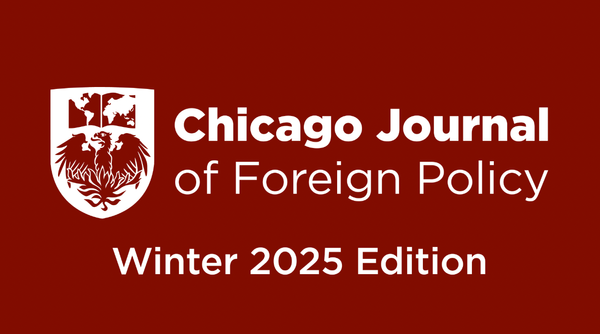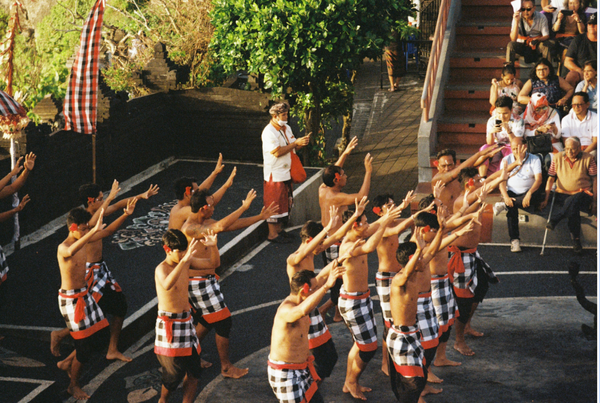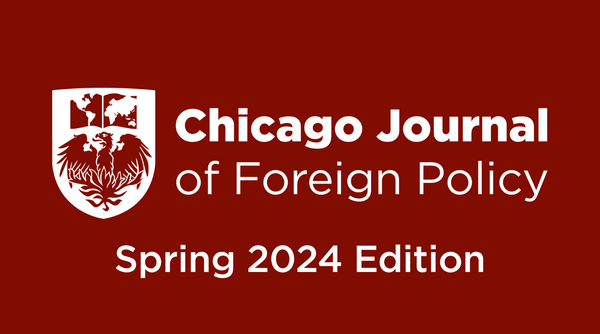A Year after Santos' Nobel Peace Prize, Why Colombia is Not at Peace

by JOSH ZAKHAROV, ’20
In August 2016, Juan Manuel Santos, then President of Colombia, and Timoleon “Timochenko” Jimenez, then leader of the Revolutionary Armed Forces of Colombia (FARC), shook hands in Havana to seal an agreement that would end a civil conflict that had wreaked hundreds of thousands of casualties, displaced millions, and lasted decades. The agreement marked a new moment for modern Colombia – peace, which it had not experienced at length since La Violencia, its 1948 civil war. Santos left Havana with the promise of peace for his nation and a major victory that would net him a Nobel Peace Prize, and Timochenko left with the hope that FARC guerillas could live legitimate lives in the Colombian mainstream and have their grievances heard.
The last few months, however, have brought with them evidence that the prospect for a lasting Colombian peace may not have as much cause for optimism as it did after Havana. Conflict deaths are up, government control over former guerilla territory has not been fully reasserted, and critical parts of the peace deal have yet to be brought to fruition. There are three primary reasons why Colombia’s peace has not held; namely, that elements of the Colombian government have held up the peace process; that the few parts of the peace deal that have been implemented are generally being implemented poorly; and the fact that other guerilla factions beyond the FARC have emerged to fill the vacuum it left behind.
First, a continued effort on the part of conservative parties in Colombia’s Congress to stymie the peace deal. After Colombia’s Congress ratified the second edition of the peace deal (including revisions after the deal was rejected by a popular national referendum), conservative lawmakers in Congress sought to delay implementation of as many of the deal’s parts as possible, and when they could not delay it, addle it with minor amendments and attempt to modify it.[i] The transitional justice system, for example, which would have tried former guerillas and awarded reparations to victims, would have allowed guerillas to run for office. Conservatives who took issues with this from the outset of the original peace deal often denied a quorum to majority party lawmakers, or added hundreds of amendments while it was being debated. Timochenko, FARC’s leader, has warned extensively against modifying the peace accords as they were agreed upon in Havana, yet most conservative party candidates for 2018’s presidential elections, including Ivan Duque (who won, and assumed office two days ago) have promised to vote against various provisions of the deal. By the end of 2017 – over a year after the original deal passed – Colombia’s Congress had only begun to implement 45% of its over 500 provisions. [ii]
Second, the logistical inability of the Colombian government to fulfill key promises to rural areas that it made in 2016. The Santos administration has been slow to implement pillars of the deal critical to successfully transition FARC land and combatants towards civilian purposes. At the outset of the deal, Santos promised to invest heavily in former FARC areas to the tune of $3 billion over 15 years, supplanting drug trade and limited social services with the full suite of commerce and services that the formal Colombian economy and infrastructure had to offer.[iii] Colombia’s weak economic growth towards the end of Santos’s presidency, however, has limited the government’s ability to make good on its commitments. For example, in 2017, one of the cornerstones of the peace deal’s transition measures – a crop substitution program to shift farmers from coca production to formal agriculture – only met 30% of its targets, and as the government destroys coca plants without offering farmers a replacement, tensions between those farmers and the government have increased dramatically; last October, for example, marked a major shootout between farmers and military police pulling up their coca crops.[iv] The government has also been slow to implement zonas verdales, demobilization camps for former FARC fighters. The government has provided minimal stipends ($220 monthly, less than most FARC members collected as guerillas) and has underdelivered on literacy and vocational training, leading thousands of former FARC members to leave the zonas; most of their whereabouts are unknown.[v] Rural development has also been insufficient, and new President-elect Duque plans to scrap many of the new agencies that Santos established to administer rural development and fold them under the Ministry of Agriculture, which has an extensive history of resource theft and slowing down development projects. Duque also plans to shift the focus of job creation in rural areas to large-scale agribusiness rather than small, independent farmers; the former is historically a poor driver of job generation.[vi]
Third, the reemergence of new actors in the power vacuum that FARC left in critical coca production and trade nodes, for example, former FARC zones like Tumaco, Catatumbo and Ituango. Though FARC was brutal and ruthless towards civilians (the United Nations estimates that FARC was responsible for 12% of all civilian conflict casualties in Colombia), FARC nonetheless maintained a recognized, clear, and oftentimes efficient order over territories it governed, particularly when Colombia’s central government failed to project power to Colombia’s rural and topographically rugged periphery.[vii] In addition to offering security to civilians in its territories from rival paramilitaries, FARC mandated that coca traffickers and producer pay their workers fair wages; they maintained infrastructure from roads to electricity; they offered some social services, including healthcare and education; and they cultivated loyalty from multigenerational members in towns related to FARC and leftist insurgency since La Violencia, Colombia’s first modern civil war.
In the absence of FARC as an authority after the 2016 peace deal, however, a power vacuum has emerged in rural Colombia that the government has failed to fill. Today, those areas are largely sparred over by remaining guerillas like the EPL and the ELN, now Colombia’s biggest guerilla group, which operates out of Venezuela and projects into Colombia through the Catatumbo. Neither of these groups has been able to establish control in the way that FARC was able to; both groups compete to extort security guarantee fees from civilians and farmers and seek to control land and sea smuggling routes.[viii] A powerful group that has consolidated control of some areas along the Caribbean is the Gulf Clan; far more ruthless than FARC, the Gulf Clan often opts to steal livestock, agricultural products, and coca paste from civilians rather than tax it as FARC did, and is more comfortable with murdering dissenting civilians.[ix] The Gulf Clan accounts for much of last year’s spike in violence and homicide in Colombia, with homicides in Ituango already up by five times more this year than in all of 2016. Violence is up along the Pacific, as well, in areas like Tumaco, where rivers provide key routes for the coca trade, and the area’s mineral wealth is being exploited by groups like ELN after FARC relinquished their control over mines.[x] New groups are also emerging around Tumaco, like the United Guerillas of the Pacific, which has pushed Colombia to deploy 9,000 new troops to the region. According to Ideas for Peace, a Bogota think tank, killings have spiked by 32.4% in post-conflict zones and by 45% in areas where the Colombian government is trying to substitute coca production for other agriculture.[xi]
This is not to say that peace in Colombia is beyond hope. Should the government of Colombia focus on allowing the peace deal to be implemented by the letter and spirit of the agreement in Havana; accord every plank of the peace deal enough effort, financing, and attention; and reassert control over areas that were operated on and even depended on FARC; then the peace deal can be salvaged. Otherwise, Colombia’s peace will be a tenuous one, and the government will have to do all it can to prevent another decades-long asymmetric conflict of the sort that it so recently concluded
Works Cited
[i] Diaz, Fabio Andres. “The latest threat to peace in Colombia: Congress.” The Conversation, 2 December 2017. Web. https://theconversation.com/the-latest-threat-to-peace-in-colombia-congress-87810
[ii] Diaz, “The latest threat to peace in Colombia: Congress.”
[iii] Murhpy, Helen and Acosta, Luis Jaime. “Special Report: A fractured peace – violent rivals rush into FARC void in Colombia.” Reuters, 26 April 2018. Web. https://www.reuters.com/article/us-colombia-peace-special-report/special-report-a-fractured-peace-violent-rivals-rush-into-farc-void-in-colombia-idUSKBN1HX2BD
[iv] Murphy and Luis, “Special Report: A fractured peace – violent rivals rush into FARC void in Colombia.”
[v] Felbab-Brown, Vanda. “Death by bad implementation? The Duque administration and Colombia’s peace deal(s).” The Brookings Institution, 24 July 2018. Web. https://www.brookings.edu/blog/order-from-chaos/2018/07/24/death-by-bad-implementation-the-duque-administration-and-colombias-peace-deals/
[vi] Ibid.
[vii] J.M. Weinstein, “Inside rebellion: The politics of insurgent violence.” Cambridge Studies in Comparative Politics, Cambridge University Press, 2006.
[viii] Valencia, Robert. “Colombia peace deal a year later: violence and drugs surge despite advances.” Newsweek, 24 November 2017. Web. https://www.newsweek.com/colombia-peace-process-year-later-violence-and-drugs-surge-despite-advances-722232
[ix] Bristow, Matthew. “‘Peace’ Brings More Murder and Cocaine to Colombia’s Rebel Zones.” Bloomberg News, 6 August 2018. Web. https://www.bloomberg.com/news/features/2018-08-06/-peace-brings-more-murder-and-cocaine-to-colombia-s-rebel-zones
[x] Faiola, Anthony. “Two years after Colombia’s peace accord, the historic election pact is in jeopardy.” The Washington Post, 16 June 2018. Web. https://www.washingtonpost.com/world/the_americas/two-years-after-colombia-won-a-nobel-peace-prize-the-peace-is-in-jeopardy/2018/06/15/c6030c9c-6d8b-11e8-b4d8-eaf78d4c544c_story.html?utm_term=.714522ffe140
[xi] Faiola, Anthony, “Two years after Colombia’s peace accord, the historic election pact is in jeopardy.”





